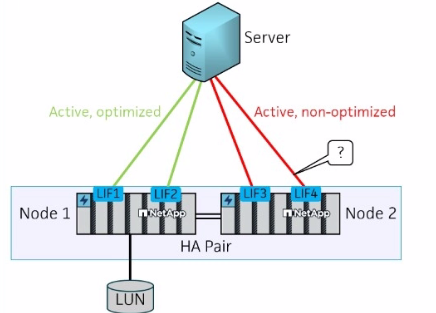Curious about Actual NetApp Certified Implementation Engineer - SAN Specialist (NS0-521) Exam Questions?
Here are sample NetApp Implementation Engineer - SAN ONTAP (NS0-521) Exam questions from real exam. You can get more NetApp Certified Implementation Engineer - SAN Specialist (NS0-521) Exam premium practice questions at TestInsights.
During expansion planning for a 10-node cluster running NetApp ONTAP 9.14.1 software, which uses SAN and NAS, how many additional nodes can be added to this cluster?
Correct : B
NetApp ONTAP 9.14.1 supports up to a 16-node cluster for SAN and NAS configurations. Given a current 10-node cluster, you can add up to 6 additional nodes to reach the maximum supported node count. This expansion capability ensures scalability for growing storage needs while maintaining high availability and performance.
For more information, refer to:
NetApp Storage Limits Documentation (NetApp)
Start a Discussions
A four-node NetApp ONTAP SAN cluster has been deployed. After installation, the engineer wants to verify cabling.
Which NetApp tool should the engineer use?
Correct : B
To verify the cabling of a four-node NetApp ONTAP SAN cluster after installation, the recommended tool is Active IQ Config Advisor. This tool provides detailed checks for proper configuration, including cabling verification, and helps ensure that best practices are followed for optimal performance and reliability.
For further details, see:
NetApp Active IQ Config Advisor
Start a Discussions
Click the Exhibit button.

A customer is testing a newly installed NetApp AFF A400 all-flash HA storage system. An SVM for FCP with a LUN on Node 1 has been configured, and a server has been connected as shown in the exhibit. For testing, the engineer plans to do a storage failover of Node 1.
After the failover, what is the expected status of the marked path?
Correct : C
In the scenario where a storage failover is performed on Node 1 in an HA pair, the path marked in the exhibit would become Active/Nonoptimized. After the failover, the LIFs from Node 1 that were active and optimized will switch to Node 2. Paths that were previously optimized will become nonoptimized because they are now served through the partner node.
For more details, see:
NetApp Documentation on ALUA
Start a Discussions
A customer has a two-node NetApp ONTAP cluster that Is hosting FC LUNs for 64 SAN hosts. An administrator is tasked to add 40 more hosts to the environment.
What two actions would the administrator need to take to avoid potential performance problems with the environment? (Choose two.)
Correct : B, C
When adding 40 more hosts to a two-node NetApp ONTAP cluster that is already hosting 64 SAN hosts, the following actions are necessary to avoid potential performance problems:
Configure additional FC target ports: Increasing the number of Fibre Channel (FC) target ports on the storage nodes will help distribute the I/O load more evenly, reducing the risk of bottlenecks.
Configure additional SAN LIFs: Adding more SAN Logical Interfaces (LIFs) will ensure that the increased number of hosts can connect efficiently, improving load balancing and path management.
These actions help maintain optimal performance and prevent congestion in the SAN environment.
For more detailed guidance, refer to:
NetApp SAN Host Configuration Overview
NetApp Best Practices for SAN (NetApp) (NetApp)
Start a Discussions
A customer wants to Implement a NetApp AFF system at a small remote site that has two ESXi servers that require SAN storage from the NetApp ONTAP based storage system. The servers will be directly connected, because the customer does not want to deploy any switches.
Which protocol should the customer use?
Correct : D
For a small remote site with two ESXi servers requiring SAN storage and no switches, the recommended protocol is iSCSI. iSCSI allows for direct connectivity between the servers and the NetApp ONTAP storage system using standard Ethernet infrastructure, which is suitable for environments without Fibre Channel switches.
For more information, see:
NetApp iSCSI Configuration Guide
Start a Discussions
Total 65 questions